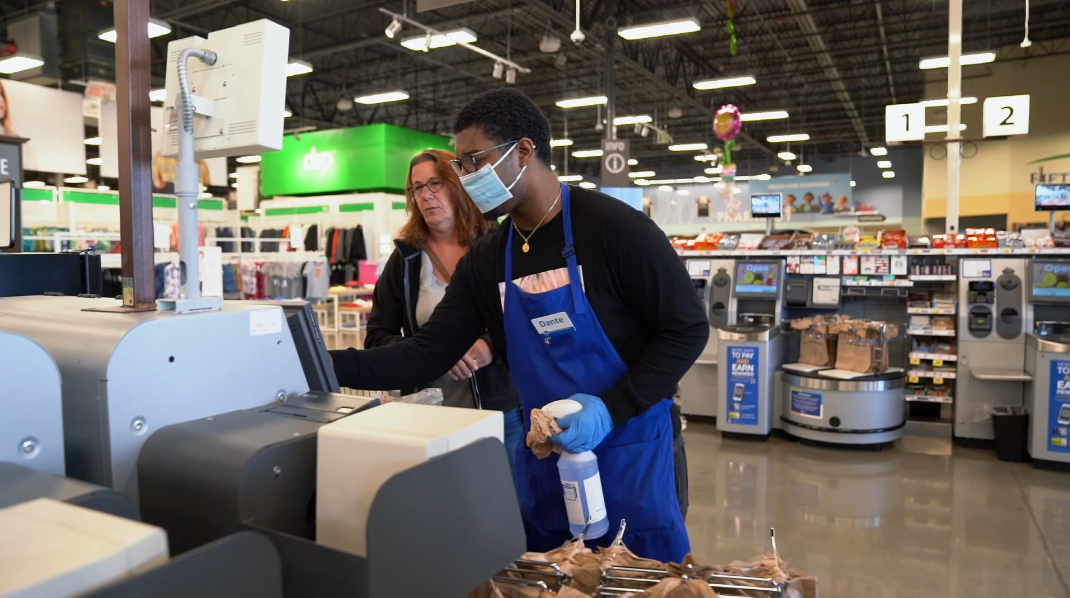-
Kroger eschedule at Greatpeople.me
“If it isn’t on the shelf, customers can’t buy it,” grocery store employees say. Their firm is built on the belief that if a customer wants something, they will be able to find it.
Retailers spend a lot of time thinking about the products they carry, whether they’re looking into a new trend or making sure staples are always on the shelf. And it got us thinking about how grocery retailers use data to make such a crucial decision.

When it comes to deciding which things to carry, retailers have traditionally considered a number of considerations, including:
•In-person traffic: Stores are becoming busier as customers resume their pre-pandemic routines. It’s critical to assess and evaluate foot traffic in order to maintain shelves stocked. From foot tracking counting systems to consumer predictive analytics to forecasting services, retailers employ a variety of techniques to understand what’s going on in their stores. They then utilize this information to determine what needs to be ordered and when it needs to be ordered.
•Seasonal products: It’s just as crucial to know which items aren’t selling. Grocery stores rely on razor-thin profit margins, so maintaining the appropriate things in stock at the right time is critical. Yeast, for example, is an essential ingredient in many winter holiday baking customs, and it sells out rapidly in November and December. During the hot summer months, when consumers don’t bake as much, stores might keep less yeast.
•Storage life: For any grocer, fresh items are an essential. They’re also laser-focused on selling available things much before the marked expiration date or any observable signs that the product is about to expire. Shelf-life management ensures that businesses arrange effective orders to keep shelves stocked with the freshest merchandise.
•Customer behavior: Identifying each individual’s requirements and preferences might be challenging when hundreds of people stroll through a grocery shop every day. Are they preparing food for one or four people? Is there any cooking going on? How many of you have children? Is it healthier to eat healthy foods or to eat comfort foods? Every piece of data contributes to a more complete picture of the client, which grocery stores may use to predict purchase patterns and stock the things that their customers want.
The typical supermarket shopping experience is being rethought.
Kroger is a grocery store business with around 2,800 locations across the United States. Every day, the organization interacts with millions of customers in this footprint. And each of those clients is a valuable data point in its own right.
As more consumers opt for self-checkout (SCO) devices, Kroger sought innovative ways to collect data that would aid in improving the customer experience. To gain insight from the more than 25,000 SCO machines, the supermarket went to IBM Technology Support Services.
The IBM solution was custom-built for Kroger’s demands, and it methodically collected and arranged maintenance, repair, and restore time data from all of Kroger’s SCO station providers. The final report provides a clear picture of all Kroger stores across the country, with the flexibility to extract insights by division, area, and even store.
“We can inform Kroger which locations are performing better and which are not,” said Joy Donaldson, Retail Delivery Executive with IBM Technology Support Services, “and if there’s anything in the data that might assist them enhance performance.”
Even seemingly minor insights can have a significant impact on the customer experience.
“Share as much information as you can with your provider,” Donaldson advised. “Everyone benefits from that information, no matter how insignificant it seems. The more data we have, the better we’ll be able to analyze it, spot trends, and make forecasts.”
Following that, Kroger intends to collaborate with IBM to broaden the current report to include data from its support desk. Check more about greatpeople portal.
subscribe via RSS